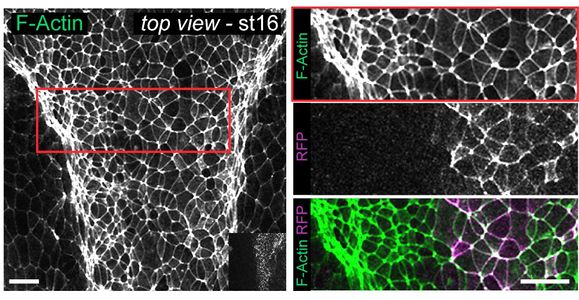Heterotrimeric G proteins are signaling switches that control cellular communication  across metazoans. From a traditional standpoint, these G-proteins are activated by G-protein-coupled receptors (GPCRs). However, a recent paper published in the Journal of Cell Biology by Arthur Marivin and colleagues provides direct evidence that heterotrimeric G-proteins can be activated in vivo by a cytoplasmic factor instead of by a GPCR. Specifically, DAPLE, a non-receptor protein bearing an evolutionarily conserved G-protein activating motif, triggers apical cell constriction during neurulation in Xenopus and zebrafish embryos via G-protein dependent signaling. This project of the Garcia-Marcos Lab was carried out in collaboration with the Dominguez Lab (Dept. of Medicine) and the Cifuentes Lab (Dept. of Biochemistry) at BU.
across metazoans. From a traditional standpoint, these G-proteins are activated by G-protein-coupled receptors (GPCRs). However, a recent paper published in the Journal of Cell Biology by Arthur Marivin and colleagues provides direct evidence that heterotrimeric G-proteins can be activated in vivo by a cytoplasmic factor instead of by a GPCR. Specifically, DAPLE, a non-receptor protein bearing an evolutionarily conserved G-protein activating motif, triggers apical cell constriction during neurulation in Xenopus and zebrafish embryos via G-protein dependent signaling. This project of the Garcia-Marcos Lab was carried out in collaboration with the Dominguez Lab (Dept. of Medicine) and the Cifuentes Lab (Dept. of Biochemistry) at BU.